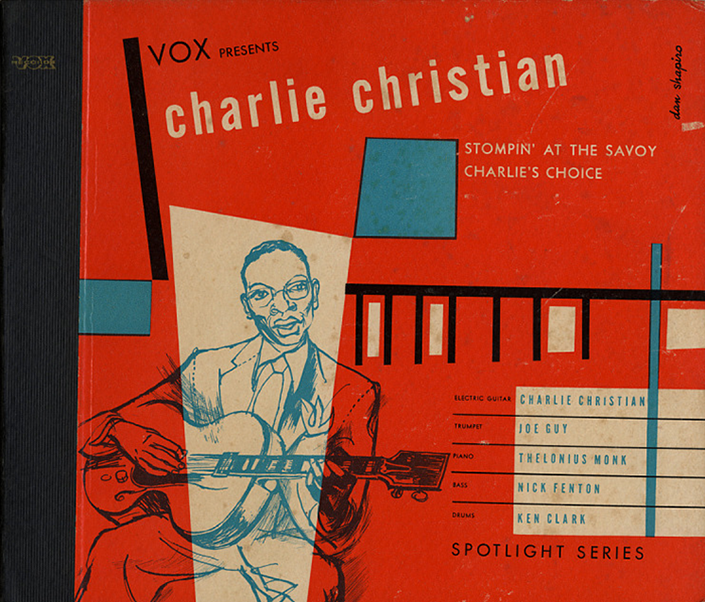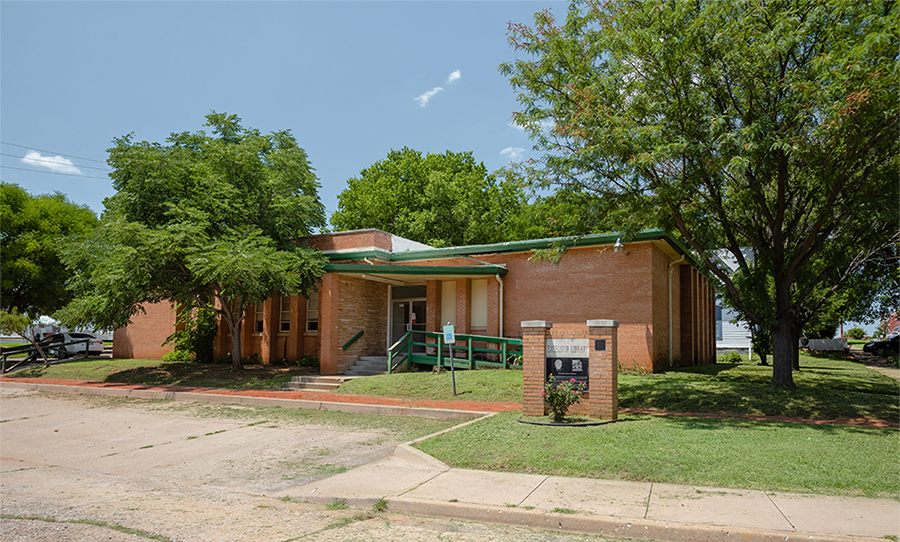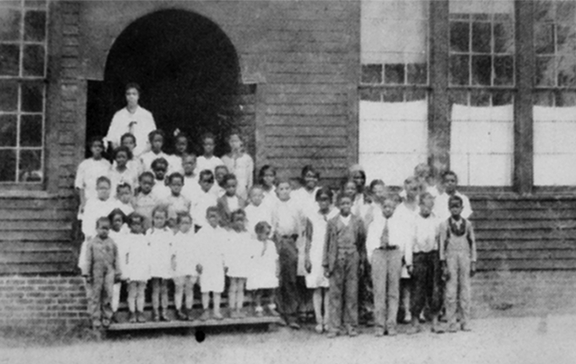
African Americans in Oklahoma Before 1954
Activities
Comparing Perspectives: Life in Boley
Many historians, especially social historians, are interested in what day-to-day life was like for most people in a specific place, job, or time. By studying and comparing the stories of different people’s life experiences, we can get an idea of what was typical and what was unique to an individual. Of course, different people will never have identical stories, but they are often similar. If the stories do have a lot in common, then you have evidence indicating that part of the story was probably true for most people living there. This is called a generalization and is an important part of writing history.
To practice comparing stories and making generalizations, try this activity.
- Make a large Venn diagram on a piece of paper that looks like this:

- Label the part where the circles overlap “similar” and the left and right parts “unique.”

- Read two interviews with residents of Boley here. These interviews are from the Spotlighting Oklahoma Oral History Project from Oklahoma State University.
- Think about parts of the stories that were the same. Did they have the same experience in school? Did they eat the same foods? Write down topics that were the same in the middle of the diagram. Put the name of each person above the “unique” sections. List a topic in the “unique” section to indicate experiences that were unique to that individual.
- Can you generalize from this information about life in Boley? Or, do you have too few similarities to draw any conclusions? Do you think reading another interview would support your generalizations about life in Boley?
Working with Diverse Primary Sources: Charlie Christian’s Music
Charlie Christian was a very important musician. You can learn about his musical style and impact here.
A primary source is a record was created during the time being studied or by the person being studied. Most people will think about dusty handwritten documents when they think of primary sources, but primary sources can be almost anything depending on the topic studied. As technology changes, different types of primary sources become available. We have many recordings of Charlie Christian performing. You can search “Charlie Christian” on youtube.com to hear these pieces. As you listen, remember most people consider Christian responsible for helping to create a different style of music and making the electric guitar an important instrument. As you listen to the different musical performances, do you hear any evidence that supports these claims?

A 1947 album of Christian’s performances (image courtesy National Museum of American History).
Working with Diverse Primary Sources: National Register of Historic Places Nominations
The National Register of Historic Places is an official list of places with historical importance. States, Native nations, and federal agencies nominate places to be accepted on the list. Once they are accepted, the people who own the property are eligible for benefits to help preserve the site and make sure it is maintained. You can learn more about the register at nps.gov/subjects/nationalregister/.
Create a Photo Exhibit
When people nominate a place, they create a record that details its importance. In Oklahoma, several places connected with African American history are on the register. To find these, visit okhistory.org/blackhistory and scroll down to the section labeled “Historic Places.” Click a link to load a page with information about the property. The page will show a button linking to a photograph (if one is available) and a button linking to the nomination form. The nomination form has detailed descriptions of the place and its historical importance.
Using these resources, create a photo exhibit (printed or digital) to show some important buildings and places relating to Black history in Oklahoma. If you do not like the picture in the nomination, you can use it to see what the property looks like and then search for a different picture. Use the description in the nomination form to get the information you need to explain why the place is of historical importance.

Excelsior Library in Guthrie opened in 1908 in a different building by Judith Carter Horton. This was the first African American library in Oklahoma and served the Black community in Guthrie during the time of segregation. This building was in use from 1955 to 1970.
Summarizing: The Campaign Against the Constitution
An important skill is being able to summarize, or briefly explain, different written works. This can be a challenge because creators of some historical documents used different words and formats to express themselves. If you read more from that time period and gain knowledge about the topic, it will get easier to understand.
In 1907 when Jim Crow segregation proposals for the constitution were being debated throughout the state, thousands of Black Oklahomans voiced their opposition. They wrote letters, held meetings, signed petitions, spoke to representatives, and wrote opinion pieces. An example of one of these opinion pieces is entitled “Wanted Men” and can be found here.
Read the piece. How would you summarize this piece? Ask yourself, what are the most important points the author makes? Taken together, what do these points mean?
Continue to practice as you learn about the campaign against the constitution by reading and summarizing other parts of The Muskogee Cimeter.

Although most of the segregation proposals failed to make it into the Oklahoma Constitution, school segregation was included. This image shows a segregated school in Poteau (image courtesy Owlcation).

